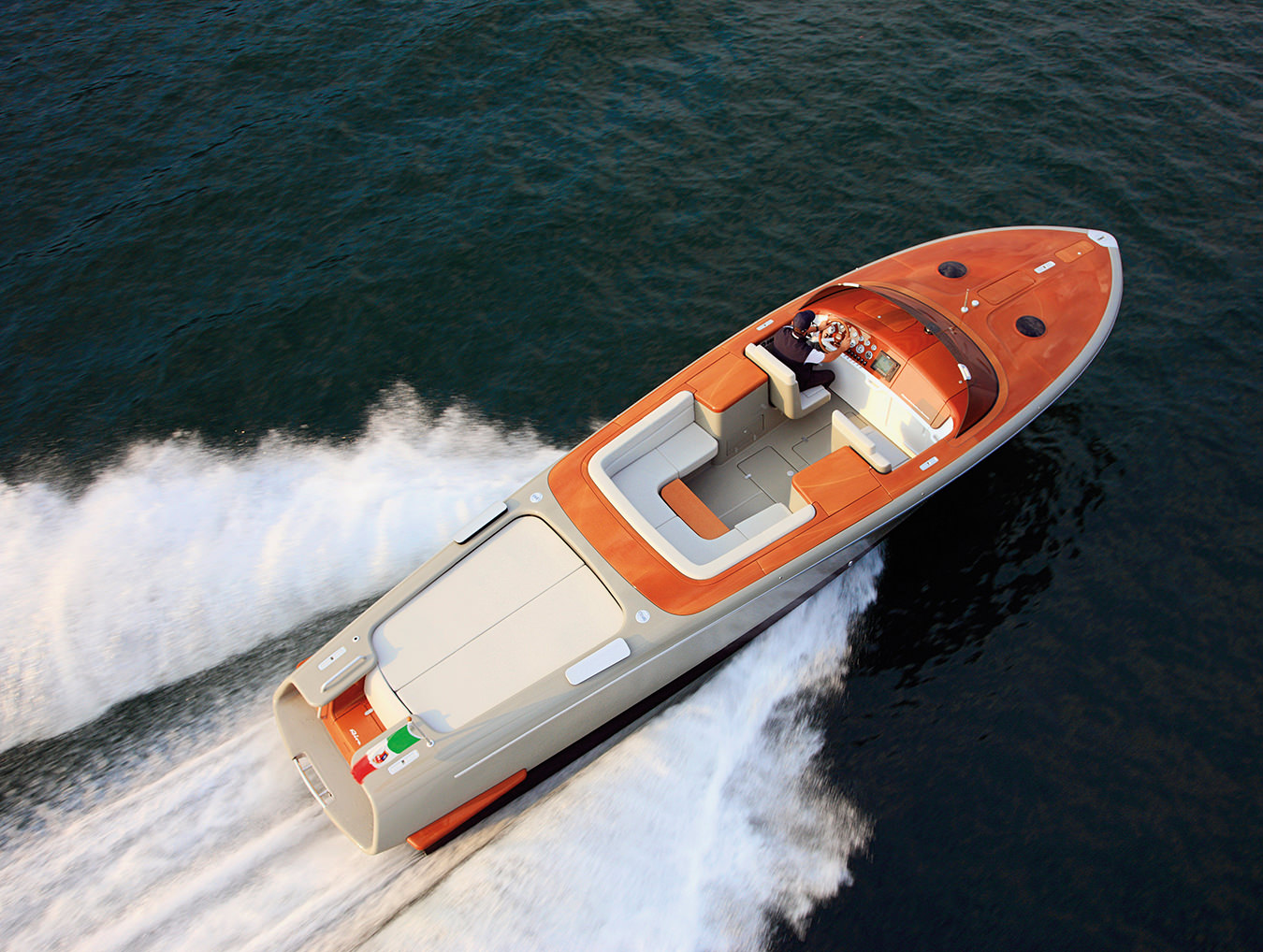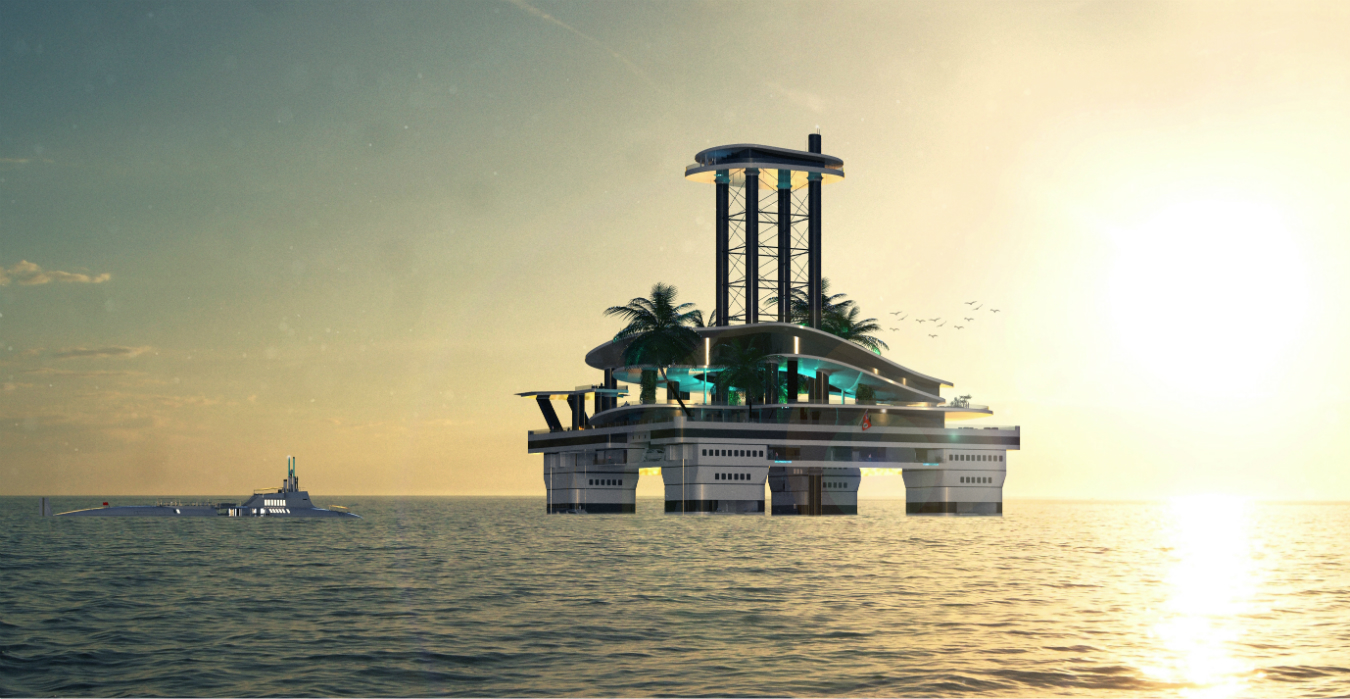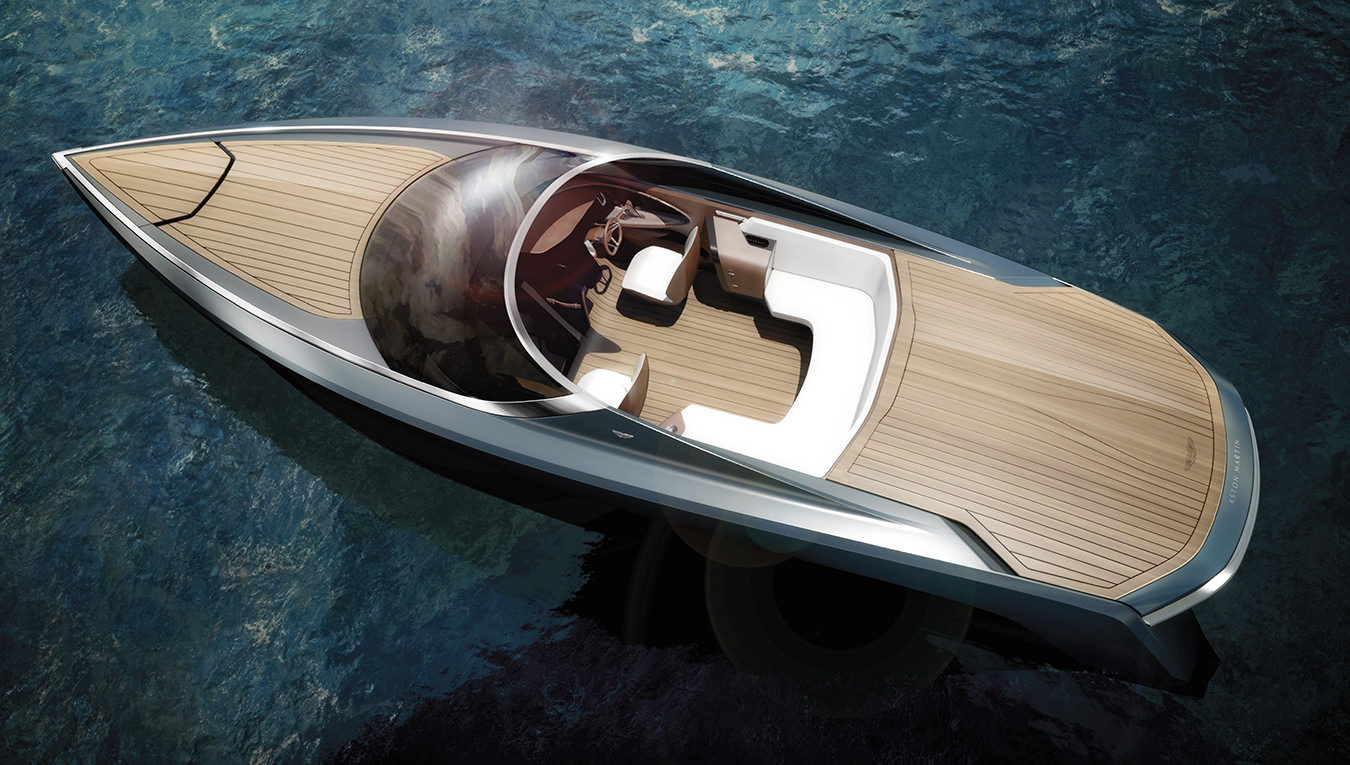The Eastbay 60 Returns to Its Roots
A combination of style, luxury, and performance.
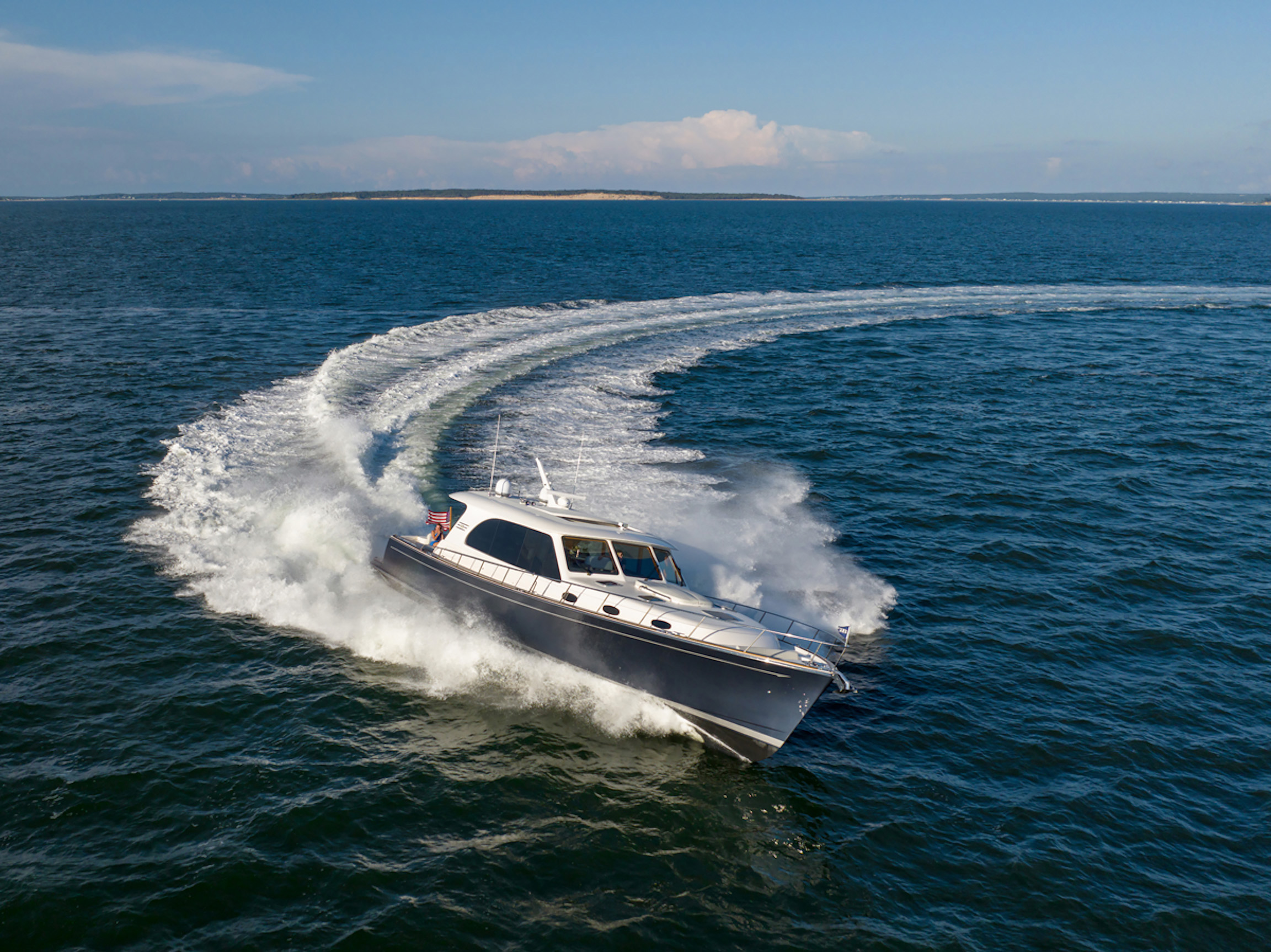
Sometimes the best path forward is to focus on one’s original bearing. That’s the case for Eastbay Yachts, as the company’s all-new EB60 embodies its distinguished heritage.
Eastbay introduced its first luxury yacht, a legendary 38-foot coupe, in 1993 when designer C. Raymond Hunt Associates collaborated with Grand Banks Yachts to create a leisure craft inspired by traditional downeast-style commercial fishing vessels. The EB38 was a smash hit, leading to the subsequent release of additional, larger models, with the line ultimately expanding to include yachts from 39 to 58 feet.
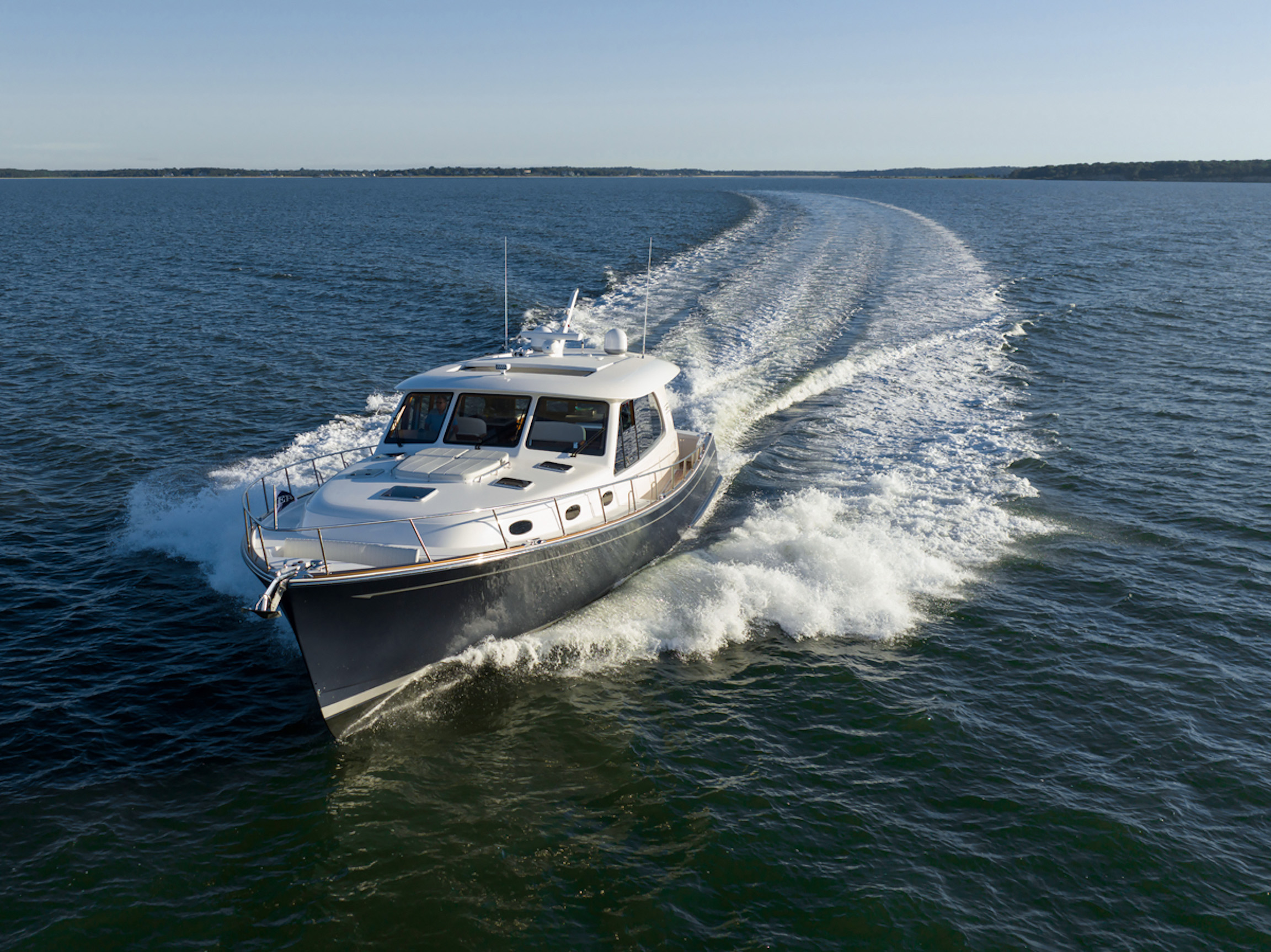
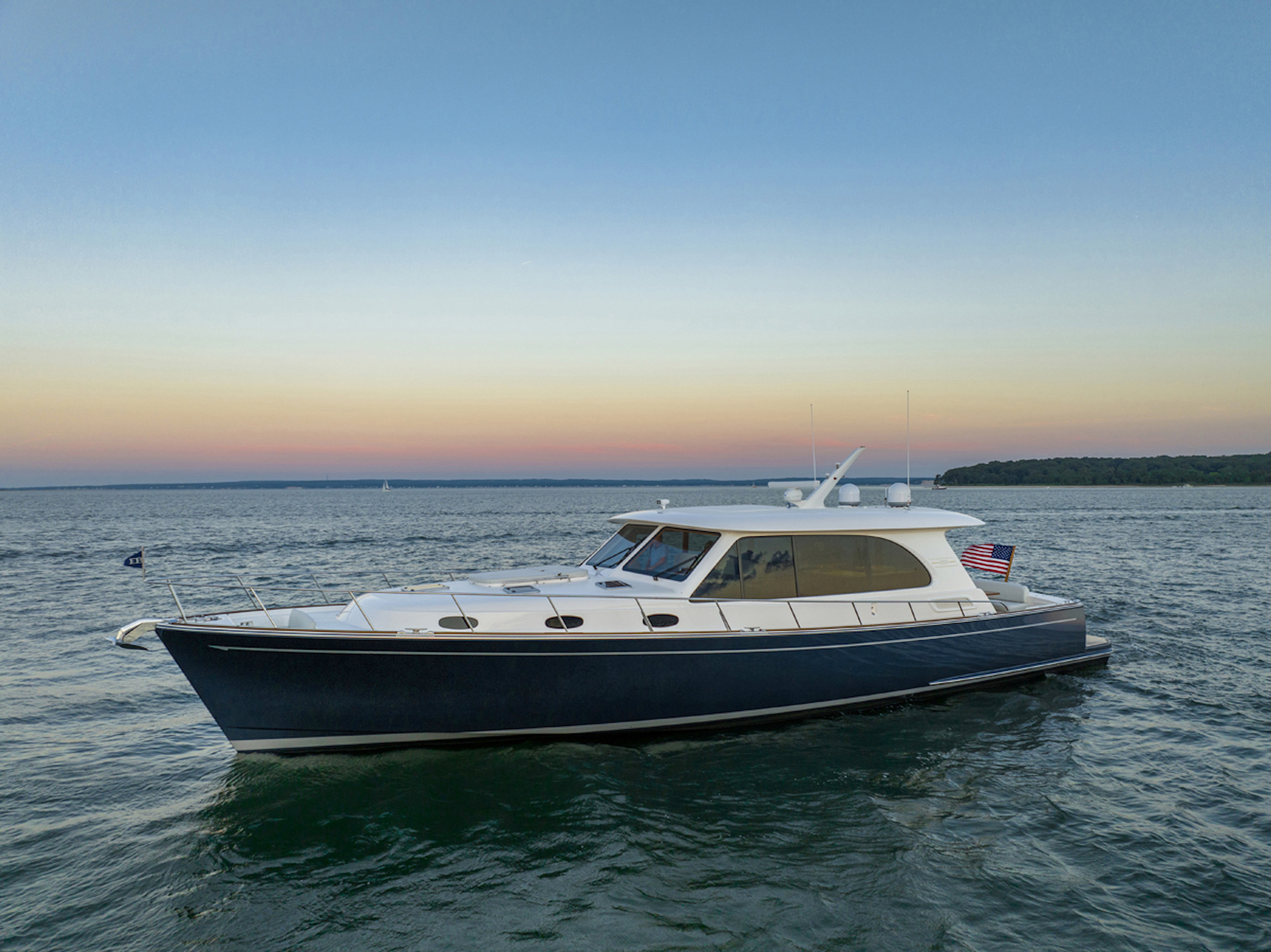
With the company poised to launch its newest and largest yacht to date, a key design criterion was to ensure that while the new boat used all the latest technology and innovations, it remained true to its DNA. With the EB60 now in the water, it’s mission accomplished for the Australian company.
So what is it that makes the EB60 so special? The answer comes down to three core metrics that are typically at odds: it’s the largest yacht in the line to date, the best performing, and the most fuel efficient.
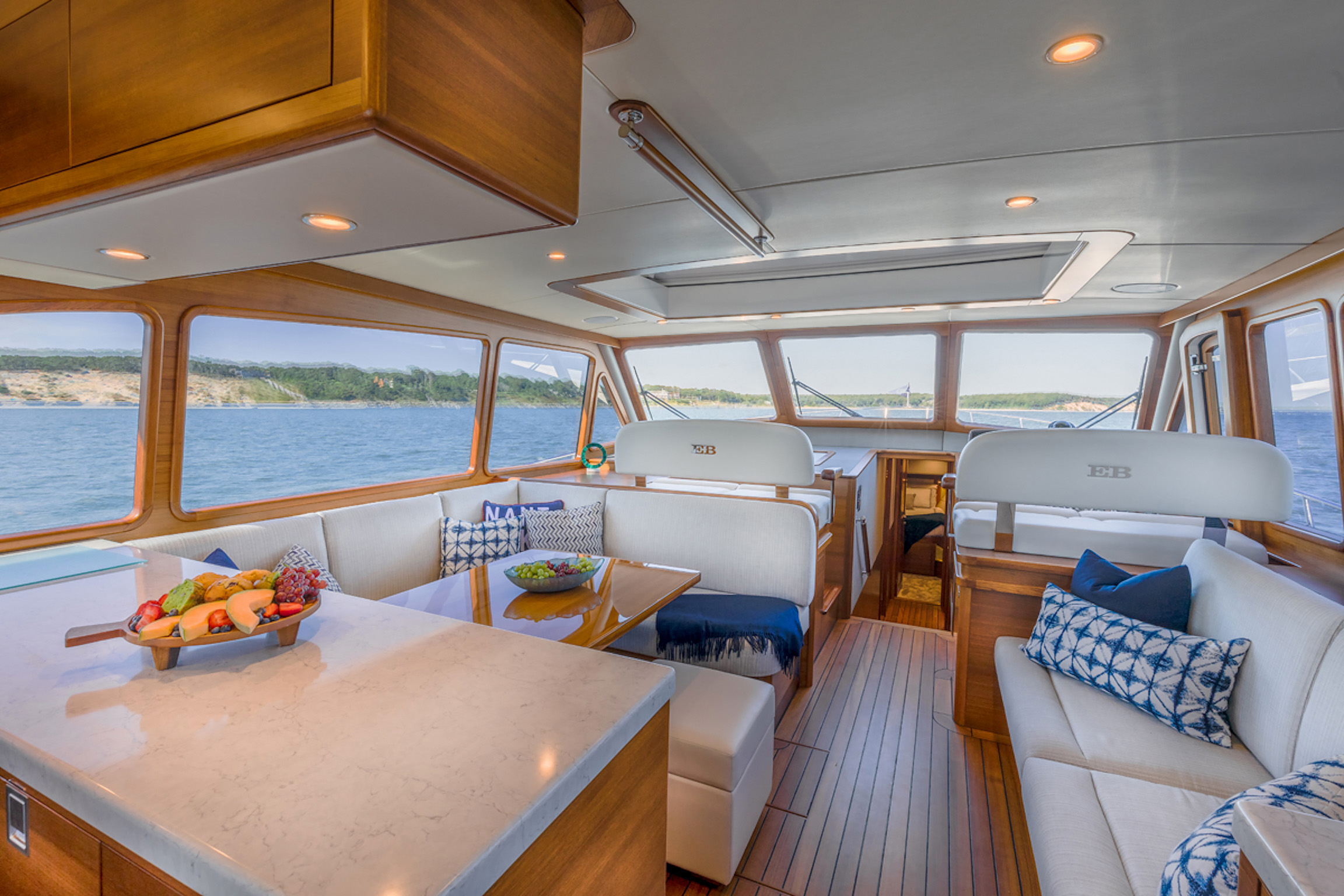
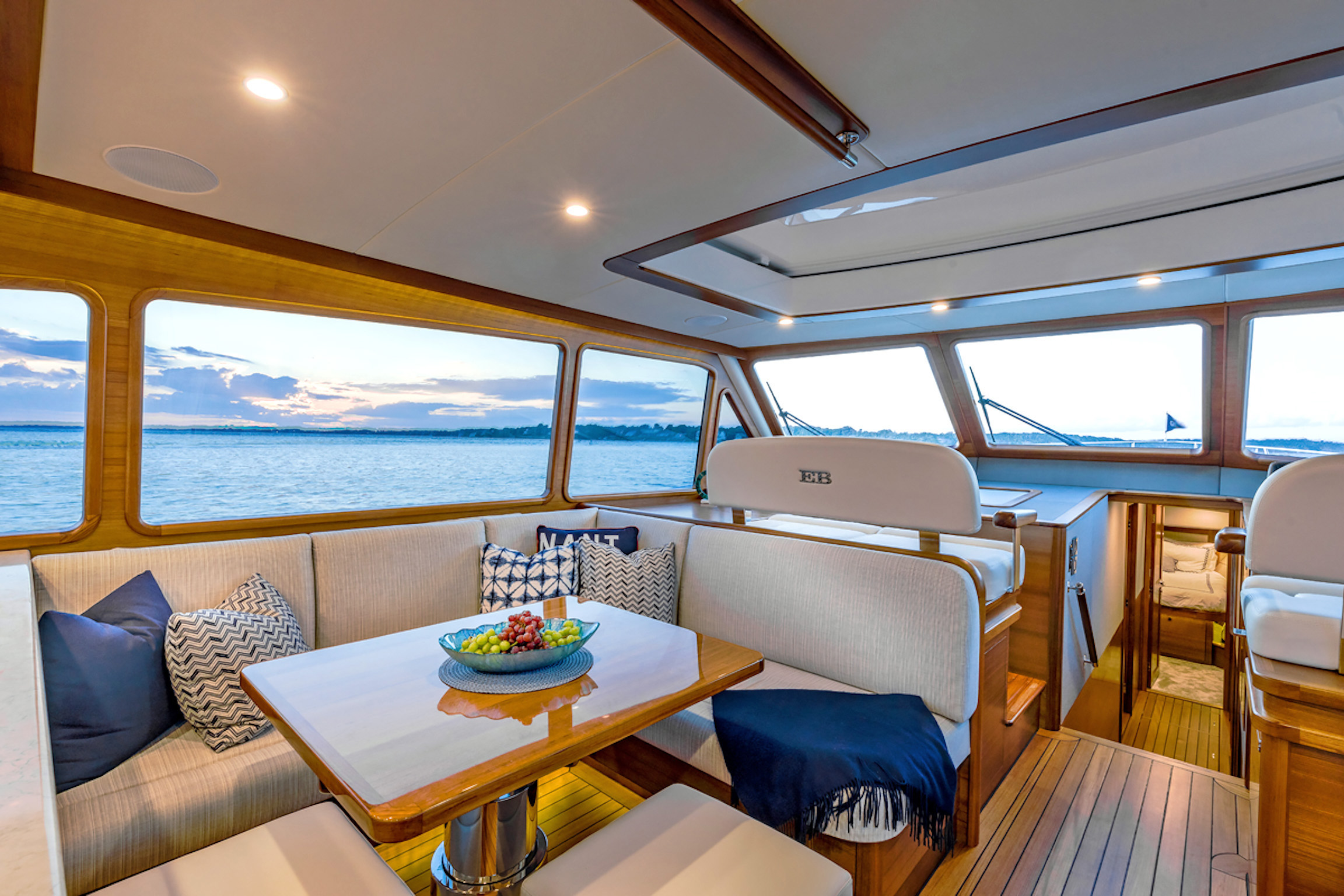
Let’s begin with a look at performance. The EB60 rides on Eastbay’s V-Warp hull, which is designed to stay in the water, maximizing waterline length and slicing through the waves. This is in contrast to a typical deep-V, which requires a lot of energy to push a boat out of the water and onto plane.
That massive energy requirement is easily seen with the naked eye by simply watching the wakes. Waves coming off yachts in this size range are often larger than one might expect, and big waves point to wasted energy. By keeping the EB60’s hull focused on parting the sea, Eastbay can squeeze more performance out of less fuel—or alternatively, make that volume of fuel go much further. It’s a bit of sailboat engineering applied to a motor yacht.
The EB60’s handcrafted interior makes the most of warm satin-finished teak carefully selected for matching grains and blended through the interior. Layouts are truly custom, with Eastbay’s interior design team working closely with the buyer to reflect their individual tastes and requirements. That includes a choice of upper galley or lower galley layouts.
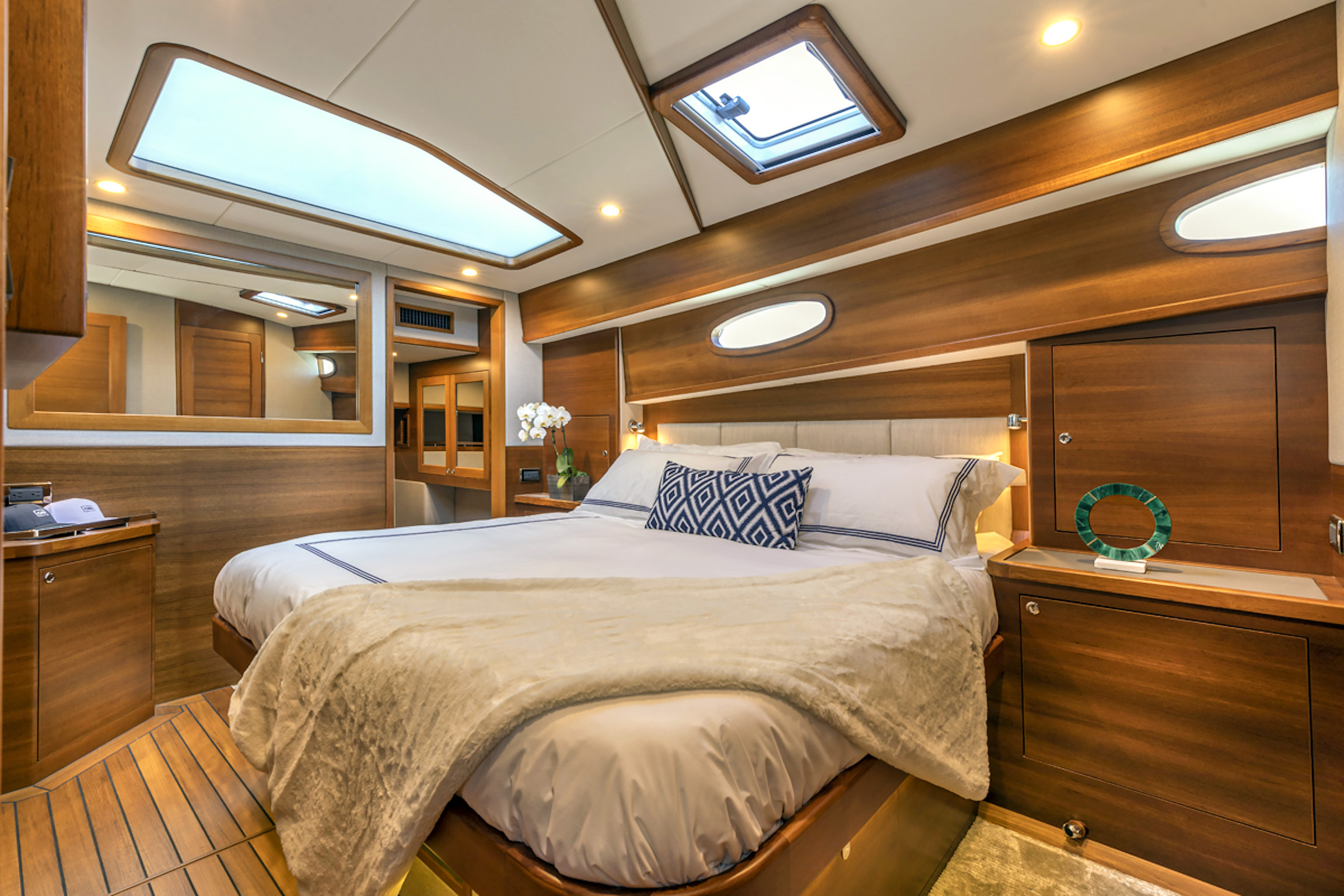
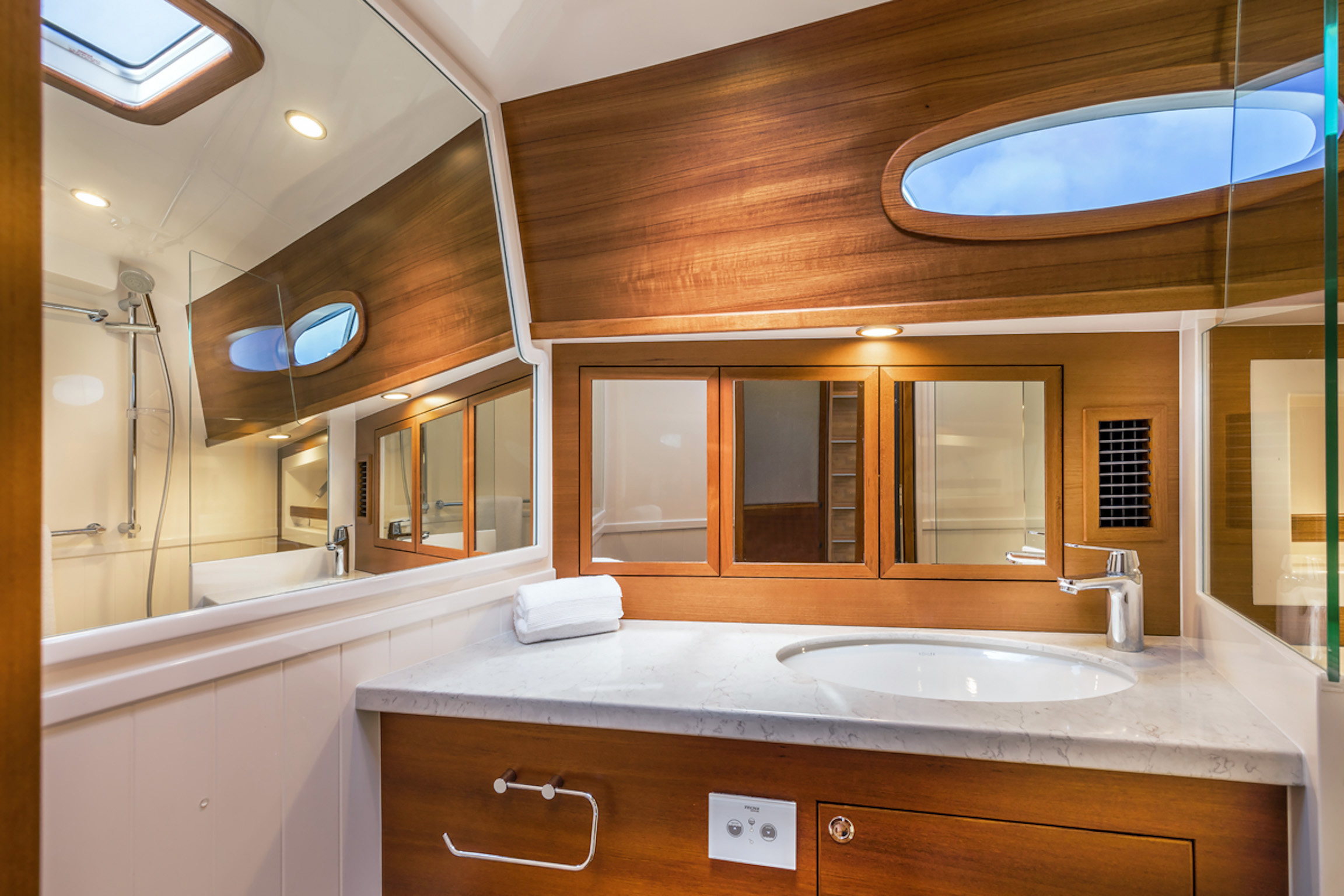
The upper galley configuration is typically preferred by North American buyers since it more easily allows dining al fresco in the cockpit and places the galley aft of the plush, portside L-shaped settee, which surrounds a handcrafted table. The electric window at the aft bulkhead lowers to connect the galley pass with the cockpit and increases fresh air flow into the salon. The lower galley arrangement allows privacy for those who prefer an intimate dining experience.
In either case, belowdecks accommodations typically consist of three staterooms. The opulent owner’s suite offers a walkaround king berth flanked by an ensuite head and a large walk-in locker with drawer storage. The guest accommodations are almost as nice, with a spacious VIP suite bathed in natural light. A twin guest stateroom features twin berths and houses the standard washer-and-dryer unit.
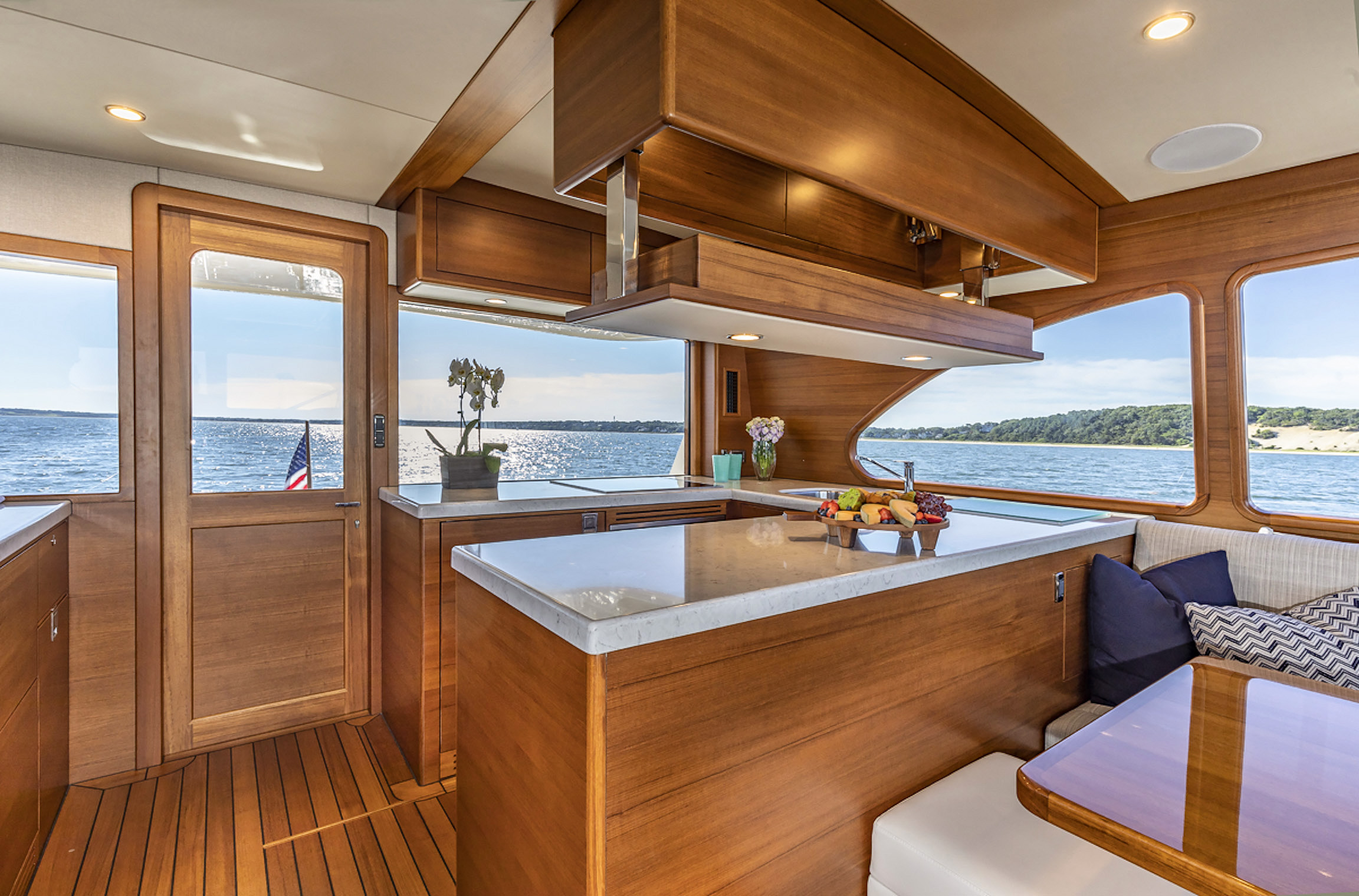
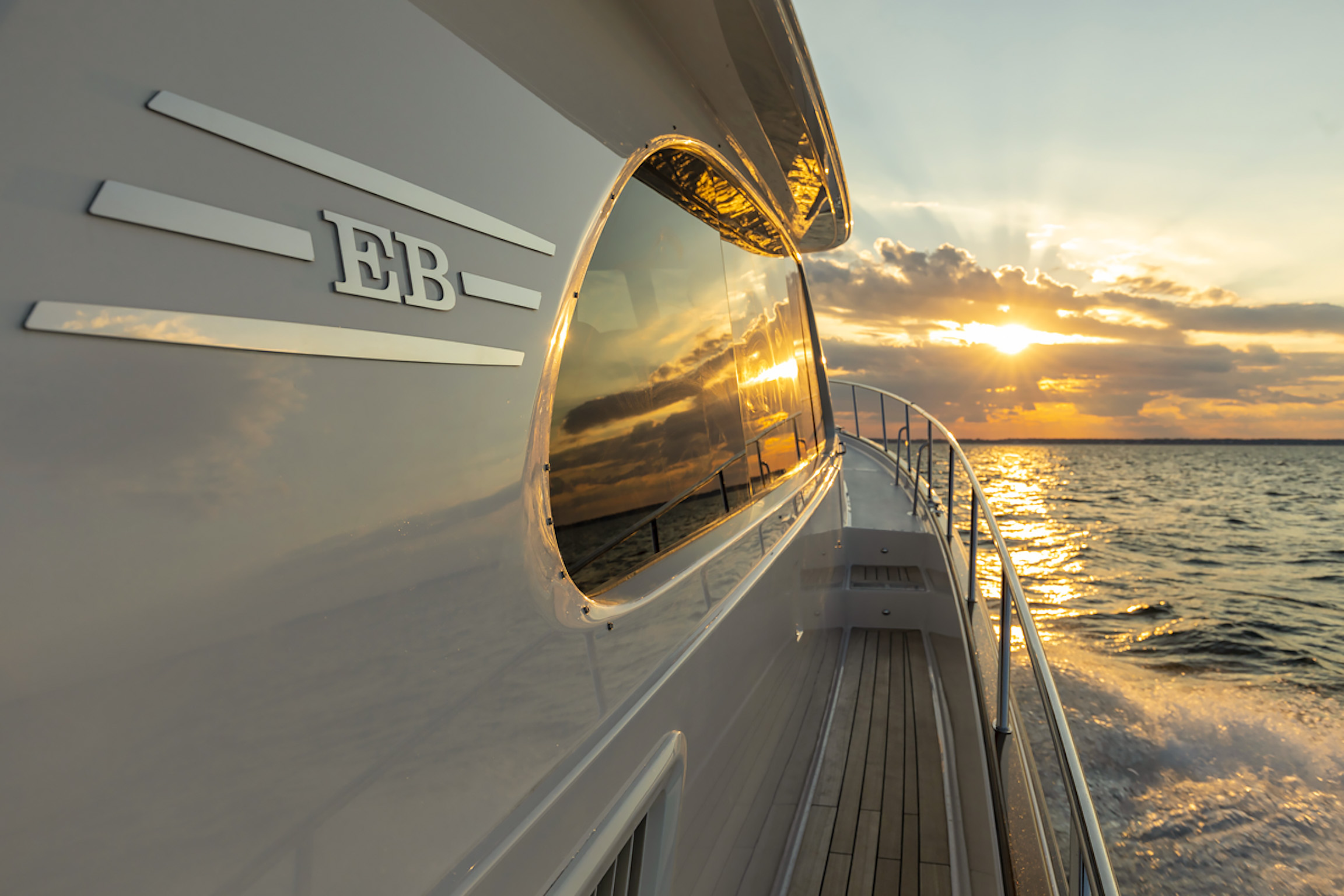
The Eastbay 60 is powered by twin Volvo Penta IPS 950s, churning out a combined 1,450 horsepower and pushing the yacht along at a cruising speed of 25 knots. Buyers looking for even more oomph can opt for twin IPS 1350s and their 2,000 combined ponies, which deliver a cruising speed of 30 knots and a top speed of 38. Between the efficiency of the EB60’s hull and the twin Volvos, this yacht delivers a fuel burn in the range of 136 litres per hour for an impressive 1,600-kilometre range.
It is this combination of style, luxury, and performance that is reminiscent of the Eastbay 60’s 38-foot ancestor. By focusing on the core values that have made Eastbay such a beloved name in yachting circles, the company’s newest and largest yacht reflects its roots. And that is a very good thing.

